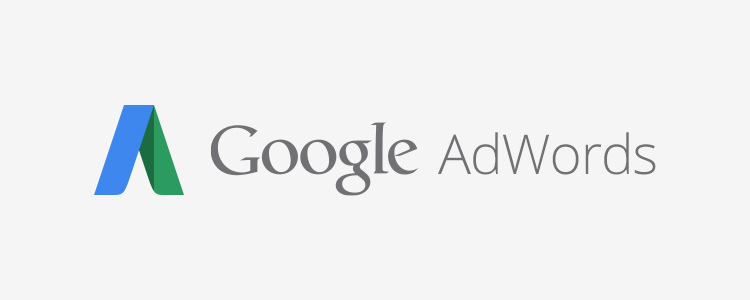
Google AdWords is Google’s advertising service that allows you to advertise your website on a SERP. Since Google is one of the biggest search engine networks, it is understandable why one would want to use a paid service to rank well on it. Businesses tend to make $2 on every $1 spent on advertising on Google Adwords. With such high ROI, Google Adwords is easily the biggest online advertising platform contributing to 97% of Google’s total revenue.
When you search for a product or service on Google, you see certain websites almost always on top with a little ‘Ad’ sign. They tend to resemble organic results but are paid searches that appear either on the side or top of a SERP.
Google Adwords works like any other advertising network. You pick a keyword you would like to rank on and create an advertisement to appear on the SERP for those specific keywords. However, competition exists since rival companies may also be vying for the same keyword. This is why a term like ‘SEO company New York’ gives several paid results. The number of advertisers interested in a specific keyword decides how costly it is to advertise for that keyword.
Beginners Guide To Google AdWords
Google Adwords works on a bidding system which was introduced in 2002. Since the advertisement slots are limited, only a selected few ads appear on a SERP. The more you are willing to pay, the higher the chances of your advertisement appearing on SERP. But, if it is all about money then why is there a need to study Google Adwords techniques?
Contrary to popular belief, Google pays attention to a lot more things than just your budget. Quality score is another factor that decides if your advertisement will make it to a SERP or not.
This can be briefly defined as CPC Bid x Quality Score = Ad Rank. Your “CPC bid” is essentially the maximum bid you specify for your chosen keyword. The “quality score” is a metric which determines how useful and relevant your ad is to the average web page visitor. Taking components like landing page, relevance and click-through rate (CTR) into equation, the higher your quality score, the better.
How to Improve Quality Score?
It is very important to improve quality score if you want your advertisement to appear on a SERP. You can do so by providing quality information on the linked page… In otherwords working on your SEO. For example, if you are advertising for the keyword, ‘buy eBooks’, then the link should directly take users to a landing page selling eBooks. This is an SEO service Toronto residents should be familiar with. If it takes users to a landing page talking about anything else or not directly selling eBooks, you will get a low quality score.
With a high quality score you may even appear on a SERP with a budget lower than your competitor. This is what makes Google Adwords tough to understand.
Why is Google AdWords so Critical to Business Success?
What makes Google’s Adwords so great is that it entails various benefits which can really supercharge your online marketing efforts by unlocking maximum ROIs, namely through these three components, to be precise:
Budget control and cost effectiveness – Remember, you’re only paying if people click on your ad and certainly won’t be paying an average rate for ads that may or may not generate any traffic. And, since you’ve worked out your daily budget, you’re getting a full-featured service but paying precisely how much you want to.
Audience targeting – This is a major aspect of maximizing ROI as well. A worst case scenario for any PPC campaign is receiving several thousand clicks, and very few conversions to show for it. This mostly happens when you’re not targeting the right audience. AdWords comes to the rescue as it boasts extensive targeting features which let you decide where you want your online ads to pop up, in addition to the languages they are displayed in or the time of day, for that matter. You can even target mobile users only, which is an important factor with 60% of online traffic coming from mobile devices and Google dominating 97% of mobile advertisement.
Powerful Analytics – The best way to have a successful online marketing drive is to have a real, concrete way to measure results. AdWords puts at your disposal integrated analytical tools to let you measure the number of impressions (which is the frequency at which your ad is displayed), CTRs, conversions and number of clicks to name a few. Learn to fine-tune these and you can effectively boost ROI. Aslo ever since Google took away the ability to see organic keywords in Google Analytics, even if you have amazing SEO services New York on your side, you need paid ads to focus those SEO efforts on the right keywords.
In addition to this, Google is huge also because it owns other major platforms namely Gmail, YouTube and Blogger. Plus, there are over a million other websites in its network so your advertisement will appear not only on Google or Google owned websites, but all relevant websites under the platform. All these combined give Google access to 80% of global Internet users.
How is Google AdWords Different from Facebook Ads?
As of late 2015, it was reported that the Internet hosts more than 3 billion regular users. Some businesses prefer to target those users through Facebook ads, while others rely on Google ads. Facebook has an impressive user base too: as of early 2016, it had 1.65 billion active users and getting more than a trillion monthly page views. You can certainly achieve a lot through Facebook marketing.
However, when you create an ad campaign through Google AdWords, you can sort and track your audience through personal demographics, keyword targeting, geographic location, device and much more. In contrast, Facebook ads revolve around demographic targeting such as behaviours, location, interests, user demographics and custom audiences.
The numbers are also in Adwords’ favor with an average CTR of 2%, a number that’s ten times higher than Facebook ads.
One might argue that both can be used to good effect, though Google Ads works best if you want immediate sales coming from specific audiences, while Facebook Ads are better suited to brands that wish to generally focus more on followers and lead generation. So from a CPC and maximum ROI perspective, AdWords is the way to go.
Three Common Features of AdWords
Here are three of AdWords’ newest and most commonly used features:
New Extensions
Google’s dynamic structured snippets automatically fetch info on your business and products, displaying it along with your ad. It allows marketers to choose what info they want displayed in addition to the ad. You can highlight things like types of products, amenities and brands, styles etc.
Call-Only Campaigns
This feature takes advantage of the ever-increasing number of individuals who are trying to find businesses on their mobile devices and want to get in touch on the spot. Apart from highlighting descriptive text on the business, call-only ads replace your ad headline with the business phone number and a “call” option, letting people call you by clicking on the ad. This will only display on mobile devices that can make phone calls through ads and while every company might not want to go down this route, if you prefer to speak to customers in person rather than website visits (car repair business or dental services), it works well because there’s a fair amount of appointment scheduling involved.
Gmail Ads
Native Gmail Ads can be run directly from AdWords, which forms part of the Display Network, featuring a good variety of rich and eye-catching ads. This lets businesses highlight particular services, deals and products.
Ads can either display a single image, an image plus promotion, or multiple products, while coaxing users to click on a CTA button. A custom HTML option lets you create your own personalized ad. The same targeting options as other display network ads are incorporated in Gmail ads, which means you target users based on demographics, topics, audience or keywords.
Winning with AdWords: Real-word Example
Many businesses have been able to find success and increase their ROI by turning to Google Adwords. One such highly successful business is Babson, which used Google Display Network to increase traffic while reducing CPA cost by 67%.
The college used Google’s Geo Targeting feature to only reach specific geographical areas, allowing it to spend less and on valuable clicks. The institution had 42 total ads on fourteen different campaigns, each with its own landing page. The marketing team kept an eye on the numbers to see which campaign did the best, and changed plans accordingly.
Within two months, around 75% of Babson’s leads were coming through Google’s Ad Network, that too at lower cost. In the words of its own representative, “Google Ad Network worked better than other networks.”. However, Babson was able to record such impressive numbers because it had a team of experts, like the team at AOK Network.
Getting Successful with Google AdWords
What is the best way to make ADWords work for you? Here’s how you should be using its features to good effect:
Master keyword usage – You can easily secure clicks, though the hard part is getting the right clicks which lead to conversion. What you need to do is focus on long-tail keywords. These specific search phrases contain three or more words might initially result in fewer clicks, but a greater chunk of these clicks will only come from genuinely interested prospects willing to convert to customers.
Using modifiers properly – How can you use these to your advantage? “Match Types” decide how keywords are treated; for instance, a ‘broad match’ allows synonyms as well as similar phrases, while a ‘negative match’ will not have certain keywords and also prevent false matches. Bidding adjustments also let you bid higher or lower per click under circumstances such as the use of a mobile device or searcher location.
Automation increases conversions – Want to increase your ROI even further? The ultra-useful automation tools unlock additional options to do just that. Remarketing nets you return customers and a countdown feature has the potential to drive conversions by displaying the number of days remaining on limited stock or a sale. Use this properly and AdWords can significantly increase website traffic and social media profiles and net you far more conversions than before.
To get most out of this PPC approach, you must hire professionals to cover your bases properly and make your efforts highly profitable. Consult our digital marketing professionals for FREE on 1.888.566.2577 to get the best advice on how to make AdWords work for you.
Creating a Google AdWords Campaign
Here’s how you can take advantage of AdWords like a pro:
Get an Account
Head over to the Google AdWords site and sign up for an account. Don’t hesitate to provide the required financial information because Google needs that to get paid for every click. You can pay using a debit card, credit card or directly linking your account to your bank account. Next, click the “create your first campaign” button. You’re all set.
Select Campaign Type
Give your campaign a unique name in order to track results. Start with a naming system that you’ll be using regularly so that it doesn’t get confusing later on.
Select Geographical Area
Consider where the bulk of your audience resides. If you’re not sure, it’s a good idea to look into your buyer personas first. If you’re working on an international scale, you can reach out to multi-regional prospects. However, be prepared to deal with different kind of buyers; i.e. you might end up paying more money than you want for visitors who end up not purchasing, so weigh in your options carefully.
Plan a Budget
A very important step – there’s no need to go overboard though you need to have enough money to see a difference. If you manually set the click bids, you’ll have more control. But it also means your ads will no longer be displayed once you exhaust your budget. Of course, you can change these settings to default or perhaps consider applying for a Google credit line. Again, it is a good practice to hire a seasoned digital marketing firm to make sure you’re getting the most out of Google AdWords without prematurely exhausting your budget.
Craft Your Ad
Your ad copy is what convinces buyers to click. They need to buy from you, because if they don’t, you still pay per click. Start with a catchy headline that has search terms to easily reach your niche. Within those 25 characters, you need to make it short and sweet. Use shorter synonyms or abbreviations if you must.
For the next and final line you have 35 characters to play around with. This is where you talk about benefits. Address pain points in the second line, and the third should focus on highlighting a special feature. If your ad isn’t doing too well, make changes where necessary.
Here are some good examples of writing high-performing AdWords ads.
Add Display URL
This is the URL search engine users will see in your PPC ad, which can differ from your destination URL. Display URLs give users an idea of the content they’ll be viewing on the landing page. Even though Google requires both your destination URL and display URL to be similar, they need not be identical.
There’s a higher chance of users clicking your PPC ad if the display URL clearly gives them a hint so as to what they should expect. The display URL appears in the very last line of your PPC ad in green. To create/edit your display URL:
- Sign in to AdWords account
- Click Campaigns tab
- Click ads tab
- To edit ad, click on the ad text
- Make changes in the next window; Google will show up to 35 characters of the display URL
- Save changes
In addition, your home page URL can also act as a landing page, but it is not the wisest decision unless your campaign is planned that way.
Add Destination URL
It is not recommended to have a PPC ad that leads visitors right to the home page. It should be a landing page which focuses on the same products displayed in the AdWords ad. Send people to the home page and they’ll have to spend extra time seeking the product or service they want. They will probably not stick around. So understand what your display URL and “destination URL” should be.
Add Keywords
Other companies are probably also competing for the same customers. Consider what keywords people will be using if they want to find the products and services you offer. For example, rather than simply use “alloy rims” in your PPC ad, use keywords like “multi-piece sport alloy rims”. Perhaps this way, you may not get clicks from people who are generally looking for alloy rims of all types, but you’ll certainly get those clicks from people who want to buy a specialized kind of rim, which also happens to be one of your product specialities. You can also localize your keywords by mentioning city or town. For example, if you sell alloy rims only in Redwood City, you can use keywords like ‘sport alloy rims Redwood City’, as to only target your audience within your city.
Bid on Those Clicks
Google needs to know how much you’re willing spend on your clicks. Keep in mind you are bidding on visibility. Those who can spend more on clicks show up more frequently in searches. In this case, you must spend money to make money, which especially holds true in the PPC game. If you’re controlling your budget on an as/when basis, you can spend more on clicks, and when you’re ready to go at it again, you can add more to your budget.
Future Outlook for AdWords
Internet advertising is entering a new era as we speak. Companies are practically neck to neck trying to find new ways to boost ROI on their digital marketing campaigns. Google’s initiative to constantly improve and redesign AdWords while providing more information in the least number of clicks will undeniably lead to better advertiser experience, hence attracting more customers.
The AOK Solution
About The Author
Dave Burnett
I help people make more money online.
Over the years I’ve had lots of fun working with thousands of brands and helping them distribute millions of promotional products and implement multinational rewards and incentive programs.
Now I’m helping great marketers turn their products and services into sustainable online businesses.
How can I help you?




